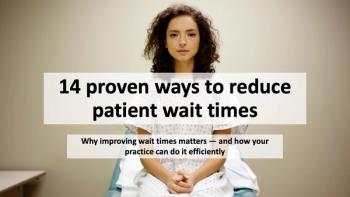
Chronic disease management: From paper records to EHRs, it remains a practice struggle
Patients with chronic illnesses are some of the most complex and costly cases practices can face, but lessons from the paper-record era show that EHRs can be of great benefit.
My dad’s journey as a patient with Type-1 diabetes shaped my life. I remember a series of significant medical events, including two kidney transplants and two new pancreases. His daily struggles with dialysis are a hard memory to shake. And there is one common memory that ties it all together: the lugging of his entire medical history to every single appointment. Those papers were heavy, both literally and figuratively. Every bit of his history and trauma was in that tome, forcing a myriad of specialists to flip through the pages to seek clarity on his complex case.
These “binder burdens,” typical of the time, unfortunately limited the quality of care my father was able to receive. My dad lost his battle at 60 years old.
From my perspective, healthcare has come a long way. I marvel at the advancements made in medical records since the days of paper records. As someone who started out as an intern in health IT, I have seen the development and implementation of EHRs firsthand. While there have been challenges, it is undeniable that these systems have reshaped the management of chronic diseases, helping both patients and providers manage conditions with greater comprehensiveness, coordination, and efficiency. Physicians are no longer forced to act as historians – and patients (and their families) no longer need to carry such a heavy burden. Beyond that, today’s EHRs are optimized to engage patients, support doctors, and enable greater opportunities to treat the right patient at the right time.
The cost is immense
According to the CDC,
Physicians, meanwhile—particularly in independent settings—are shouldering workload burdens as they struggle to manage patients with complex conditions. Their intention is to focus on the patient in front of them, but often they’re distracted by an increasing load of administrative and clerical tasks, especially after hours. This trend is resulting in burnout among clinicians, who lack the tools to help them deliver patient care effectively in the current healthcare environment.
Independent practices have an edge
With supporting resources, independent physician practices are in the optimal position to effectively manage complex disease patients. On a large scale, digitization of medicine enables providers to identify and understand trends in entire patient populations. Within the EHR, providers leverage data about effectiveness of treatment plans and make determinations about future treatments based on presenting data. Physicians are also able to seamlessly search through patient charts for specific terminology when treating chronic disease. These tasks, just two of many, were not feasible with paper charts just one to two decades ago.
Regarding individualized care, EHR functionality that’s customizable to a provider’s needs helps align proper treatment steps for patients with specific conditions. For example, in the care of diabetes patients, EHRs will automatically generate a suggestion to schedule a foot exam and an eye exam; for a follow-up appointment, it may even send the patient a direct link to a portal with online scheduling capability. Other tools facilitate auto-filling of clinical information from previous visits to optimize the provider’s consultation time with the patient.
EHR software that integrates engagement tools enables patients to be more active in their own care. In the case of chronic diseases, patient involvement is critical in making the most of check-ins and check-ups. Integrated reminder systems, seamless portal access for patient tasks, and even telemedicine options support the patient in being connected and invested in their health. When digital tools enable this engagement, it’s much more likely that patients make progress toward treatment goals, particularly when related to lifestyle changes and medication management.
When independent physicians are able to leverage the many benefits of the EHR, including automation, providing care becomes simpler and more efficient, enabling quality clinical visits that hold the potential to yield improved outcomes. Amid complaints I occasionally hear about the industry’s experience with EHR technology, I consider the paper record-keeping days of my father. Today’s chronic care patients—and their healthcare providers—have access to technologies that guide effective disease management. Let’s continue to invest in tools that help physicians and patients achieve their goals.
Amanda Hansen is president of AdvancedMD, South Jordan, Utah.
Newsletter
Optimize your practice with the Physicians Practice newsletter, offering management pearls, leadership tips, and business strategies tailored for practice administrators and physicians of any specialty.








